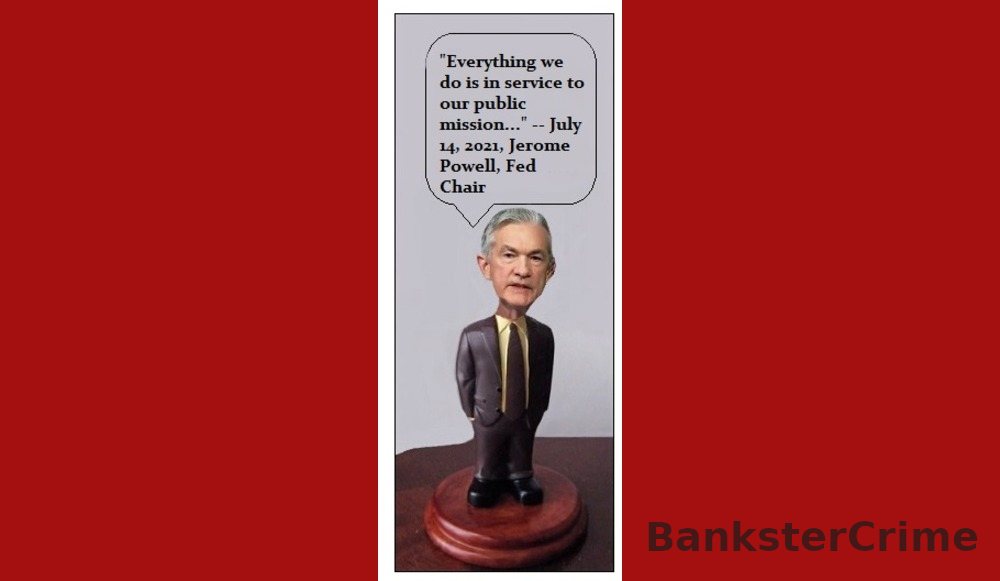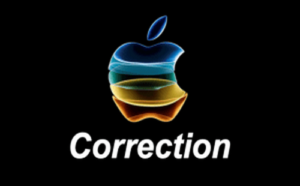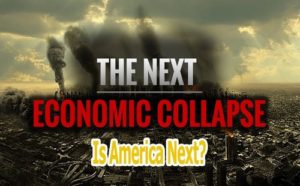
BanksterCrime:
New Study Says the Fed Is Captured by Congress and White House — Not the Megabanks that Own the Fed Banks and Get Trillions in Bailouts
By Pam Martens and Russ Martens: August 15, 2024 ~
A fascinating new academic paper has been released. Its title is “The Myth of Fed Political Independence.” Its premise is this: “The much-vaunted independence of the Federal Reserve is a myth. The Fed is not the bastion of sound monetary policy. Rather, it is just another politically coopted agency of the federal government.”
The study asserts further that “Something like the Stockholm syndrome seems to describe the institutional relationship that exists between the U.S. Congress and the White House (the captors), and the Federal Reserve (the captives).
The paper is written by Thomas Joseph Webster, Professor Emeritus of Economics at Pace University’s Lubin School of Business, who has written extensively on the Fed and the role that its quantitative easing has played in ballooning budget deficits, the national debt and inflation.
Dr. Webster previously worked as an international economist with the Central Intelligence Agency and the U.S. Department of Defense – which suggested to us that he might have insights into the workings of the U.S. government that we were missing in our analysis of the Fed.
Based on our analysis over three decades of research, the Fed has been captured by the Wall Street megabanks. But is it possible that both our premise and that of Dr. Webster could be simultaneously correct? If Wall Street has also captured key components of the Executive Branch and the U.S. Congress, then there is actually no conflict between these premises.
Let’s start off with some basic facts that are not in dispute.
The Federal Reserve Board of Governors is defined as “an independent agency” of the federal government. However, what makes up the Federal Reserve System is both the Board of Governors and 12 regional Fed banks that are private corporations. These 12 regional Fed banks are, literally, owned by shareholders which are the member banks in the respective 12 Fed districts.
These members banks in each respective Fed district elect six of the nine members of each regional Fed bank’s Board of Directors. (While Jamie Dimon was serving as Chairman and CEO of JPMorgan Chase, and his bank was under investigation by the New York Fed for losing $6.2 billion of depositors’ money by gambling in derivatives in London, Dimon was sitting on the New York Fed’s Board of Directors.)
The five largest shareholders of the New York Fed are Wall Street megabanks: JPMorgan Chase, Citigroup, Goldman Sachs, Morgan Stanley, and Bank of New York Mellon. As this might suggest, the balance of power at these 12 regional Fed banks is far from level.
Trader on New York Fed’s Open Market Trading Desk (Source: Fed Educational Video)
The Federal Reserve Board of Governors outsources a large part of its functions to the New York Fed, including all of its trading operations. The New York Fed is the only regional Fed bank to operate a trading desk in both New York and Chicago. The New York Fed’s trading desks have speed dials to the trading desks of the Wall Street megabanks, whom it uses to conduct its “open market operations.” Despite that incestuous trading relationship, the New York Fed is also in charge of sending bank examiners into the same banks. (For how that’s working out, see the story of former New York Fed bank examiner Carmen Segarra at ProPublica and our review of her book, Noncompliant.)
According to the most recent Federal Reserve Board of Governors Annual Report, as of 2022 the Fed Board of Governors employed 2,988 employees while the New York Fed employed 2,957. The New York Fed has over 1,000 more employees than 10 of the other 12 regional Fed banks, according to the same report. (See page 163 at this link.)
The Federal Reserve Board of Governors had operating expenses of $912.9 million in 2022 versus operating expenses at the New York Fed of $1.2 billion. (See pages 156 and 161 at this link.)
The same 2022 Annual Report shows that the President of the New York Fed had an annual salary of $528,800. (See page 215 at this link.) At a 2023 Washington Economic Club event, the Chair of the Federal Reserve Board of Governors, Jerome Powell, stated publicly that his salary was $190,000.
Surely the fact that the President of the New York Fed is making $300,000 more than the Chair of the Federal Reserve Board of Governors would suggest just who it is that has captured the Federal Reserve System.
Equally noteworthy, and suggestive of who has captured whom, the President of the United States has a salary of $400,000 – significantly less than the New York Fed President.
Next, let’s turn to the New York Fed’s electronic printing presses and where the money is going. In July 2011, thanks to an amendment sponsored by Senator Bernie Sanders to the Dodd-Frank financial reform legislation of 2010, the audit arm of Congress, the Government Accountability Office (GAO) released the results of its audit of the secret emergency loans that the Fed had funneled to Wall Street megabanks and their foreign derivative counterparties from December 2007 through July 2010. The vast majority of these loan operations were handled by the New York Fed and the vast majority of the revolving loans went to New York Fed member banks. According to the GAO audit, out of a total of $16.1 trillion in revolving loans, 40 percent of that amount went to just three New York banks: Citigroup $2.513 trillion; Morgan Stanley $2.041 trillion; and Merrill Lynch $1.949 trillion. (See chart below from the GAO report.) (Merrill Lynch is now part of Bank of America, a shareholder of the Richmond Fed.)
For more on the recent Fed bailouts in the trillions of dollars to Wall Street megabanks, see our report: Former New York Fed Pres Bill Dudley Calls This the First Banking Crisis Since 2008; Charts Show It’s the Third.
So back to our original question: Could Dr. Webster be correct that the White House (Executive Branch) and Congress have captured the Fed because Wall Street has co-opted the Fed directly and also the levers that control the Fed in the Executive Branch and Congress? The answer is yes.
As long as the Wall Street fundraising bundlers for the presidential campaign get pivotal roles in the transition team — that plays an outsized role in recommending to the president who will head the U.S. Treasury, the U.S. Department of Justice and the federal banking regulators, it is true that the Executive Branch is part of the capture of the Fed.
The invisible hands that went into writing the Dodd-Frank financial reform legislation following the financial crisis of 2007-2010, wrote into law that the Fed had to gain the approval of the U.S. Treasury Secretary before initiating emergency lending programs in the future.
That means that the U.S. Treasury Secretary will continue to come from the likes of Goldman Sachs, Citigroup or the Fed itself – as in the case of Janet Yellen, who took millions of dollars in speaking fees from Wall Street between her departure as Fed Chair and arrival as U.S. Treasury Secretary.
As for some Congressional members, they appear more than happy to lobby for their largest campaign donors, whether that is Wall Street, crypto or the fossil fuel industry.

![]()




